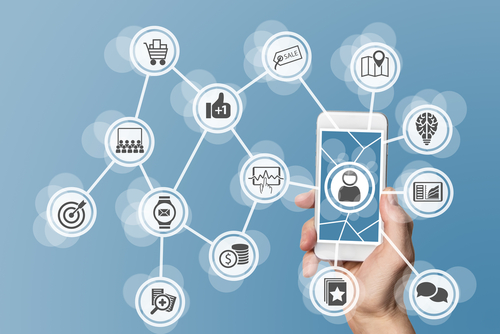
For years, marketing executives wanted to have a 360-degree view of their customers. At first, it was a matter of collecting the data. Now, we have the opposite problem. We've got so much data, we need new ways to collect and use it.
Although the data needed to create that comprehensive view of customers is now being collected, it's often stored in separate systems across the organization. This results in data silos that render the information less useful if it were integrated into one platform.
In a sense, one hand doesn't know what the other is doing. The information can't be used to enhance a specific customer's experience, nor can it be used to aggregate and develop a broader customer experience strategy.
In order to truly use all of the data we have access to, we need to knock down the silos and raise the customer data platforms. The emergence of customer data platforms (CDPs) has enabled such disparate customer data to be collated within a single intelligent environment, thus providing a synchronized, well-integrated view of the customer.
What is CDP?
The short answer is that a CDP is a packaged software that enables your company to pull together information about your customers from different sources to create a unified customer profile into a single platform.
So, if Janet is a single mother who lives in Texas, loves to shop for cooking related items on your website, uses American Express points to buy Christmas presents, and surfs your products online from her phone at night, a CDP can help you leverage that knowledge.
What Can CDPs Do?
Once you have that integrated information in the form of a customer profile, you can then segment like-customers for marketing purposes, use it to predict future behaviors and communicate with customers through cross-channel messaging.
You can remarket using real-time data to push relevant messaging depending on consumer behavior at the moment. In other words, if Bob Smith is a guest at your hotel, leaves his hotel room and goes to the pool bar and orders Happy Hour appetizers, the platform can push an SMS message to his phone with offers for the property's restaurants.
If he doesn't visit a restaurant but goes back to his room, the CDP uses sophisticated logic to figure out why, and might even offer a room service suggestion on one of his devices.
A Single Point of Control
CDPs go so much farther than CRMs. It's about collecting the data that are already available, and then combining them into a single point of control so that marketers can increase engagement at every touchpoint.
The way to do this is to create a unique customer ID and then let the sophisticated technology gather the data and combine it, process it and match the relevant pieces together until you have a complete customer profile.
CDPs are still in their infancy stages, and the technology still has a long way to go. In fact, only half of all marketers are using CDPs at this point. But early adopters can benefit from the information that the data provides to improve customer engagement.
Knowing exactly how much cost and revenue are coming from Janet and Bob can help you understand which segments are performing, and how.
Choosing the Right CDP
Since the TheCDP market is currently a $300-million industry and projected to reach $1 billion by 2019, there are a lot of options out there. Major providers of CDPs include ActionIQ, Zaius, AgilOne, Tealium, BlueConic, Simon Data, Custobar, Retention Science, Datorama, Lytics, Quaero and Optimove.
So, how do you choose the right one? Or, more importantly, the right one for you? It's about knowing your industry, your customers and the kinds of data you are already collecting. Then, consider different ways to use that data to improve customer engagement and improve your bottom line.




